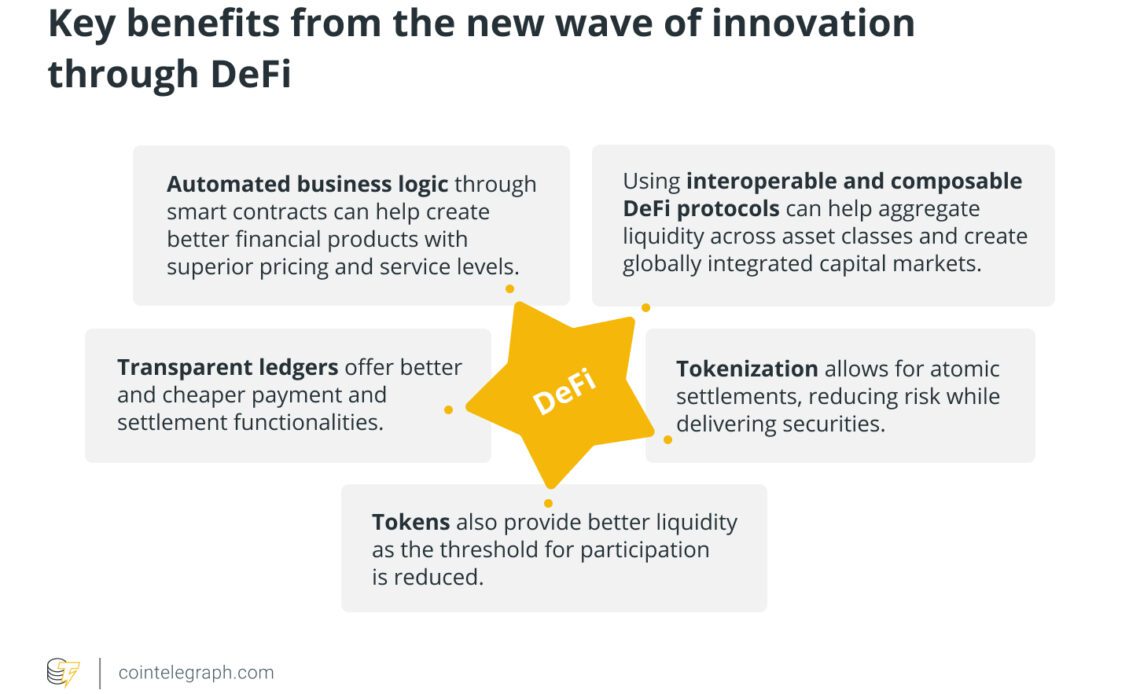Financial services institutions and banks have increasingly engaged with Web3 since 2020. This is also true within institutional decentralized finance (DeFi), as several potential use cases have emerged that could trigger a new wave of innovation within these organizations.
Institutional DeFi does not refer to growing institutional investments in DeFi protocols and decentralized applications (DApps) but rather to large institutions using DeFi protocols to tokenize real-world assets with regulatory compliance and institutional-level controls for consumer protection. A common question that comes up is: What benefits does DeFi offer on top of digital banking?
Not long ago, banking was a physical effort where transactions were paper-based and interactions took place through a network of banks. Digitization added efficiencies by automating services and reducing the burden on bank branches. Fintech-led innovation enabled seamless customer interactions with very few physical touchpoints.
The digitization of banks still meant that information was distributed, creating reconciliation overheads. While transactions were executed over digital networks, bookkeeping still had to be performed separately. DeFi would bring the execution of transactions and bookkeeping onto the same network. That’s the advantage that DeFi provides over plain vanilla digitization.
While banks understand the opportunities that lay ahead with institutional DeFi, there are several hurdles to overcome before benefits can be realized at scale.
In 2019 alone, banks spent over $270 Billion per year to comply with regulatory obligations toward offering mainstream financial services. Banks and financial services firms must collaborate with regulators and will need to get several controls in place to tap into institutional DeFi.
Regulatory compliance for institutional DeFi
Banks go through high levels of rigor before offering their products and services to consumers. They are checked for viability through stress scenarios, but more importantly, are also checked for conduct issues. For instance, lending products are scrutinized for mis-selling to customers if the interest rates are very high.
In the DeFi world today, there are products that wouldn’t survive banks’ usual degree of due diligence. Several DeFi platforms offer three and four-digit annual percentage yields to their liquidity providers, which is unheard of in mainstream financial services.
The DeFi world also suffers from a lack of…
Click Here to Read the Full Original Article at Cointelegraph.com News…
























